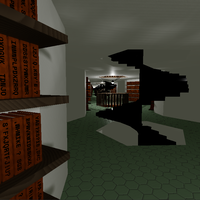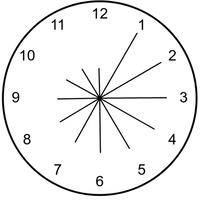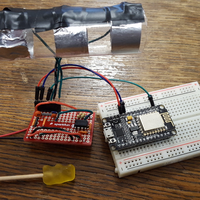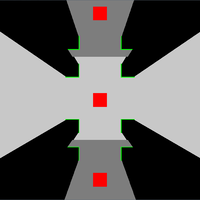
Total Library
2022-07-05The Library of Babel is a phenomenal short story by Jorge Luis Borges. It's a crystalized version of the kind of mathy alternate universe story I am obsessed with. The story takes place inside an apparently endless library, the walls are lined with books with nonsense contents composed of apparently random sequences of letters. The narrator posits that the library contains exactly one copy of every possible book. I've wanted to recreate this world myself for a while and spent about a year on and off building it into a game.

Fractal Trees: Boundedness
2020-09-06When does a fractal tree stay bounded, and when does it explode off to infinity? In the last post we looked at a few fractal trees and set up an interactive demo so we could get some intuition on what fractal trees and how their parameters influence how they look. Now let's dive into some of the math behind them.

Fractal Trees: Introduction
2020-08-05This was originally going to be a small section in a short series building up to a simulation of evolving trees, but it has turned out to be extremely interesting on its own. I have a few parts worth of interesting math to go through related to fractal trees, but in this part we'll just go through what they are, some cool examples, and an interactive demo where you can mess with the parameters and see what comes out.

Harmonic Waves
2019-10-27I have been occasionally obsessed with this video for years and I finally sat down to deconstruct it. The video shows a row of 15 pendulums, with each pendulum being slightly shorter than the last. All of the pendulums are started swinging at once and they follow a kind of snaking pattern that devolves into chaos. However, they occasionally line up into two or three groups that swing together before falling out of phase again. After 60 seconds they all line up in one row and the pattern repeats.

Bee++
2019-02-01There is currently an epidemic of dying bee hives. Colony Collapse Disorder, where the majority of a hive’s worker drones disappear suddenly, has doubled in prevalence since 2007. These bees are vital for a vast portion of our agriculture. Without them our crops would remain unpollinated and not produce the food and other products we need to survive. In order to combat this issue, I developed a sensor to monitor the traffic through a beehive’s entrance.
Bark to Text
2015-08-28As I promised in my last post, A Twitter account for Oliver, I have been working on a bark-to-text translator for Oliver's twitter account (@OliverBarkBark). The overall process ended up being rather simple. Since the original recordings often capture multiple bark sounds, I needed to split the audio files into distinct barks. With that done, all that was left classifying the different bark noises that Oliver makes. For that I reused the pyAudioAnalysis library from the bark vs. junk classification step in detecting Oliver's barks.

A Twitter Account for Oliver
2015-08-17My dog Oliver has always been quite vocal, and recently I decided that his thoughts and comments needed to be shared with the world. Thus the @OliverBarkBark project was born. By connecting a Rasberry Pi, a wifi dongle, and a microphone, I was able to make a system that automatically detected, filtered, and published each and every one of Oliver's deafening vocalizations.

Enhanced 2D Visibility Project
2015-02-07For the last year and a half or so, I've been working on a project I like to call Enhanced 2D Visibility. Visibility mechanics in 2D games have been around since the original Rogue at least, and more recently in games like Monaco. The basic idea is that if you don't have direct line of sight to an area of the screen, then it shouldn't be visible.